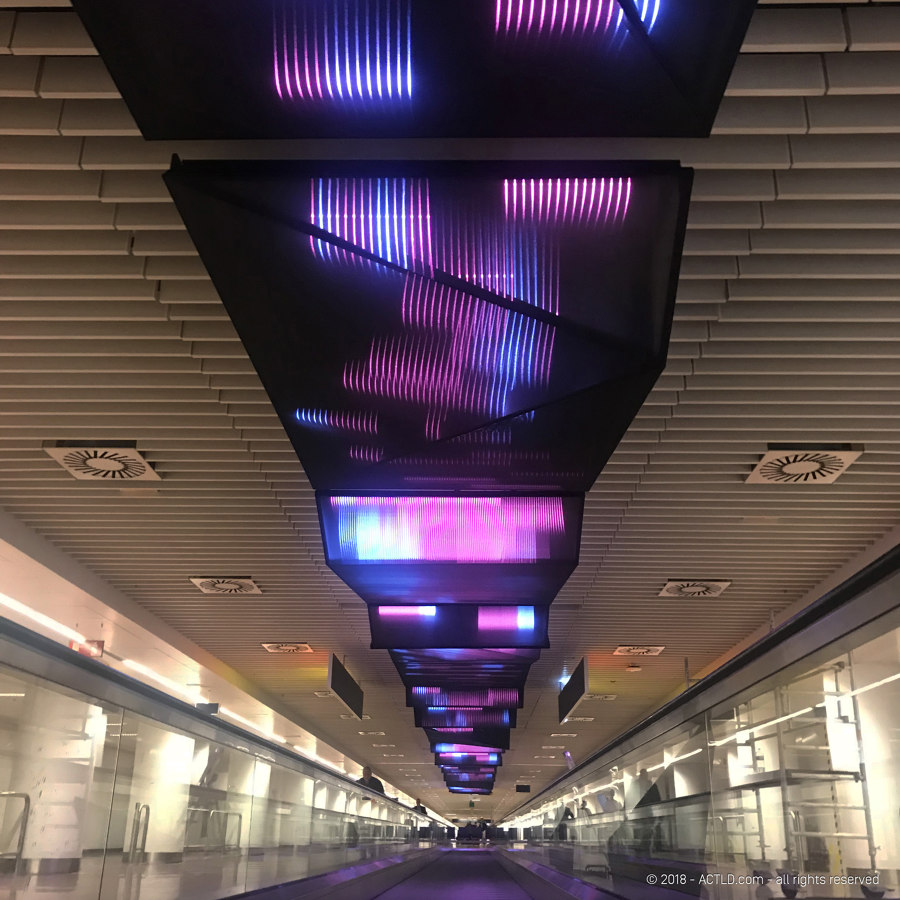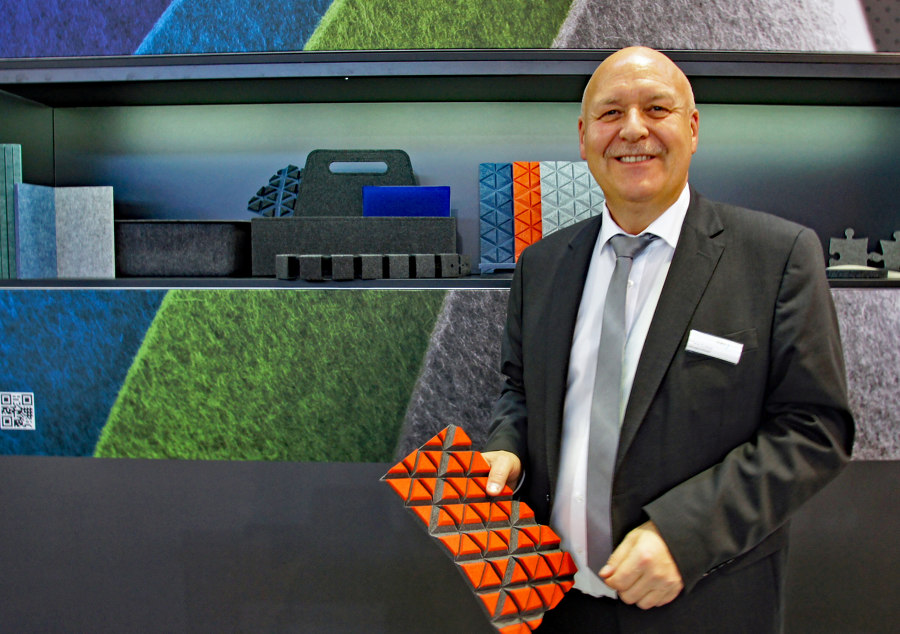More than lightweight construction: Techtextil 2019
Texto por Techtextil
Frankfurt, Alemania
29.05.19
TECHTEXTIL 2019 showcases textile innovations for architecture.
View of the themed special “Urban Living – City of the Future”: installation by Samira Boom with Archi Folds at Techtextil 2019 Photo: KMänner
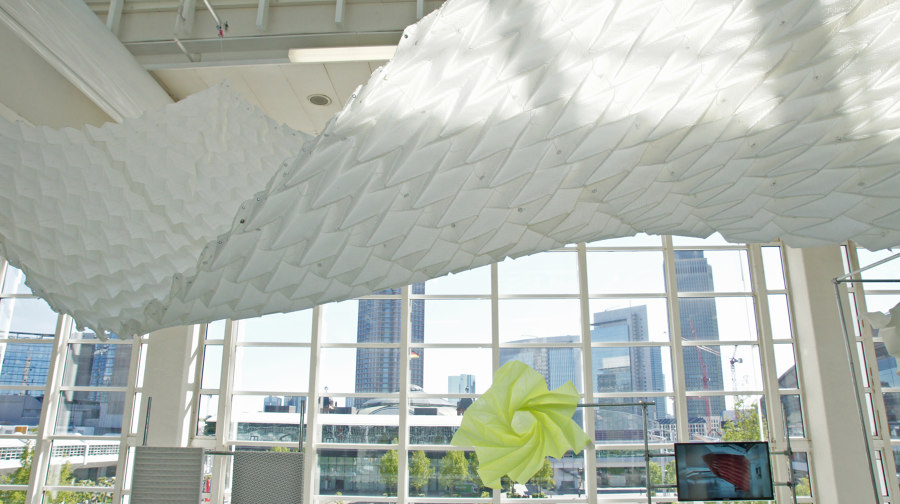
View of the themed special “Urban Living – City of the Future”: installation by Samira Boom with Archi Folds at Techtextil 2019 Photo: KMänner
×How can we overcome the challenge of urbanisation? This was one of the main questions asked by Techtextil, which took place from 14-17 May 2019 in Frankfurt. Answers were provided not only by the main themed area “Urban Living – City of the Future”, but also by several highly innovative companies in the trade fair's halls. From basalt fabrics and smart textiles to glass fibre heating systems: those seeking new concepts and standards for forward-looking architecture found themselves in exactly the right place at the internationally leading trade fair for technical textiles.
‘There is no doubt that textiles are the key to face challenges brought to us by urbanisation, like scarcity of raw materials and energy resources, increased mobility and the need for flexible housing’, explains Anne Marie Commandeur, founder of the Stiljlinstitut Amsterdam and curator of the “Urban Living” exhibition at Techtextil. Her extensive selection of projects could be viewed as a direct appeal to architects to engage much more with textile innovations. There are plenty of good reasons to do so: ‘Textiles are flexible as well as adaptable, and next to a modest carbon footprint, they are compared to other materials lighter to transport, easier to assemble and disassemble, leaving minimal post-construction waste’, says Anne Marie Commandeur.
From road construction to heat insulation: textile solutions made from basalt by DBF GmbH Photo: KMänner
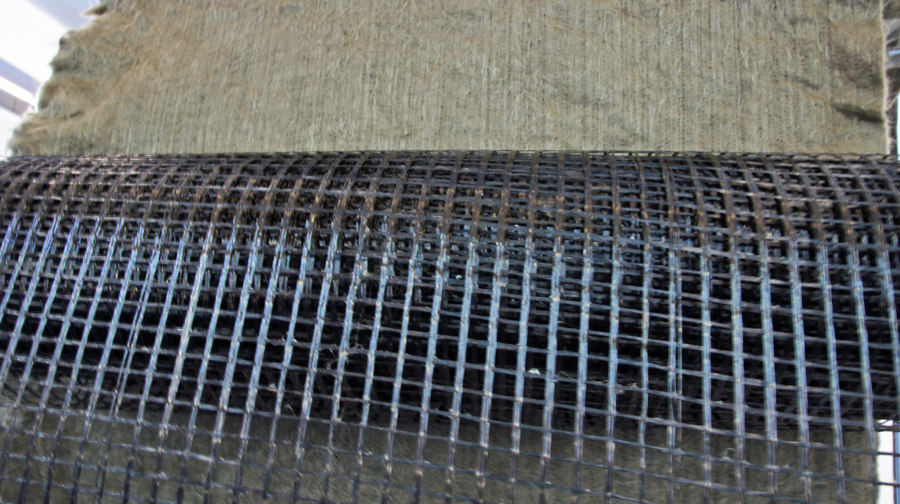
From road construction to heat insulation: textile solutions made from basalt by DBF GmbH Photo: KMänner
×Sustainable material innovations
In addition to freedom of design, the sustainable aspect was a main focal point for the Dutch designer, for whom the only way forward is ‘circularity in design’. This approach is increasingly being adopted by the industry, as the numerous ‘green’ material innovations at Techtextil 2019 showed. Manufacturers such as revira, Carl Weiske and CaPlast are focusing more and more on PET recycling and biopolymers. Other companies are specialising in recycling concepts, such as Derotex from Belgium, which sources its raw materials from e.g. coffee and cocoa sacks.
Flexibility in basalt
Innovations made from basalt are attracting increasing attention. The advantages of this natural material are obvious: in contrast to steel, basalt is lighter, has a higher tensile strength, does not corrode and therefore requires a concrete covering of just 1 cm instead of 4 cm like steel. Furthermore, basalt is recyclable, non-toxic, non-combustible (melting point of 900°C - 1200°C) and has a good CO2 balance. One of the pioneers in this respect is DBF Deutsche Basalt Faser GmbH, whose products are already successfully used in major fields of application, including reinforcement fabrics and rods for road and concrete construction as well as laminates and insulation materials (nonwovens).
Presenting a textile innovation made from basalt: Tobias Mader, Managing Director Fulcoline, and Dr Kristin Trommer, FILK, at Techtextil 2019 Photo: KMänner

Presenting a textile innovation made from basalt: Tobias Mader, Managing Director Fulcoline, and Dr Kristin Trommer, FILK, at Techtextil 2019 Photo: KMänner
×The joint product by manufacturer Fulcoline and the Forschungsinstitut für Leder und Kunststoffbahnen (FILK) research institute in the form of BasaTexx, the first basalt fabric with a silicone coating, opens up new horizons. The innovative tarpaulin is waterproof and airtight, has been classified as non-combustible (A2) and produces neither smoke nor droplets in the event of fire. The fields of application in architecture range from fire protection to temporary buildings such as lightweight halls or roofs, which can be situated much closer to buildings than conventional solutions thanks to their A2 classification.
The art of straightness: “CurveTex” by Penn Textile Solutions opens up completely new design possibilities for textile concrete Photo: KMänner
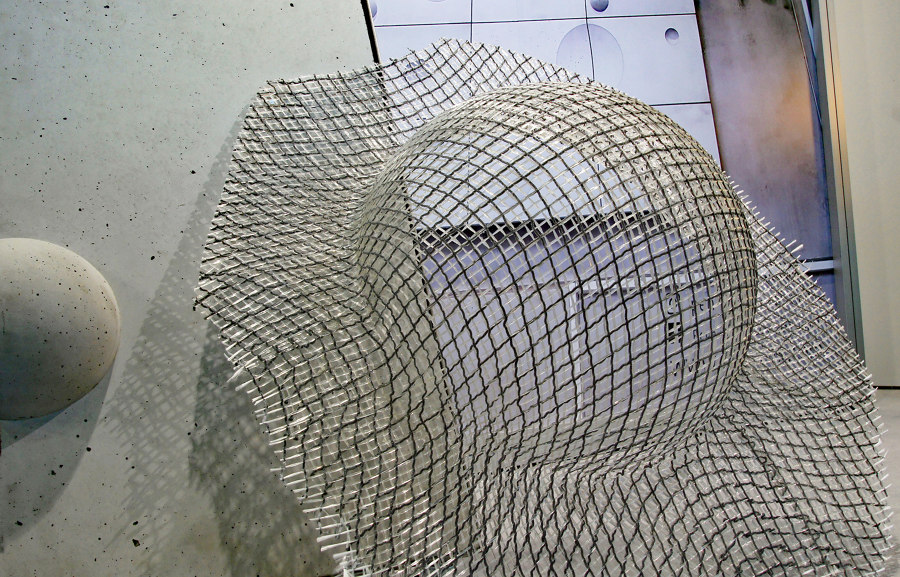
The art of straightness: “CurveTex” by Penn Textile Solutions opens up completely new design possibilities for textile concrete Photo: KMänner
×Textile concrete on top form
The world innovation “CurveTex” by Penn Textile Solutions in Paderborn offers a completely new dimension of design freedom for textile concrete. In cooperation with the Institut für Textiltechnik (ITA) at RWTH Aachen and Stanecker Betonfertigteilwerk, the Paderborn-based company has realised the world’s first double-curved textile concrete façade. Previously, the process only allowed flat shapes. The basis for the new malleability is a textile reinforcement that is laid absolutely straight and crease-free and into which glass fibres have been inserted to increase flexibility.
Warm walls
Heat from the sun directly from the roof into a room: with “V4heat”, Vitrulan presents a new, intelligent surface heating system that can be directly coupled with a photovoltaic system. It is based on a glass fibre reinforcement fabric that can be easily embedded in various materials and invisibly integrated into walls, floors or ceilings. The system runs on direct current which is harmless to health. The smart control system allows comfort zones to be set up throughout the house and offers protection against mould in bathrooms or damp exterior walls if required.
Let the sunshine in! Vitrulan presents a glass fibre heating system that can be directly coupled with a photovoltaic system Photo: Vitrulan

Let the sunshine in! Vitrulan presents a glass fibre heating system that can be directly coupled with a photovoltaic system Photo: Vitrulan
×Countering the weather and cyber crime
Overall, Techtextil offered many remarkable innovations in the field of textile architecture. Sattler PRO-TEX GmbH, for example, presented its new “Atlas Architecture” membrane. The completely new weave with increased PVC coverage for this field of application ensures, among other things, an above-average degree of whiteness, improved tensile strength as well as very good UV resistance and longevity. It thus offers lots of new and unique possibilities for projects in textile architecture.
When it comes to shading and weather protection, Ettlin AG has a new product called “TransProof”, a fabric for permanent outdoor use with adjustable combinations of properties: the ultra-fine and thus very light grid is both water-repellent and permeable to air and light. This prevents the accumulation of heat while keeping the view unobstructed, even with a high sun protection function. GKD Architekturgewebe offers attractive façade and safety systems made of metal. When it comes to digitalisation, shielding and protective measures against digital attacks are gaining in importance.
Increased whiteness that lasts: the “Atlas Architecture” innovation by Sattler PRO-TEX GmbH Photo: Sattler PRO-TEX GmbH
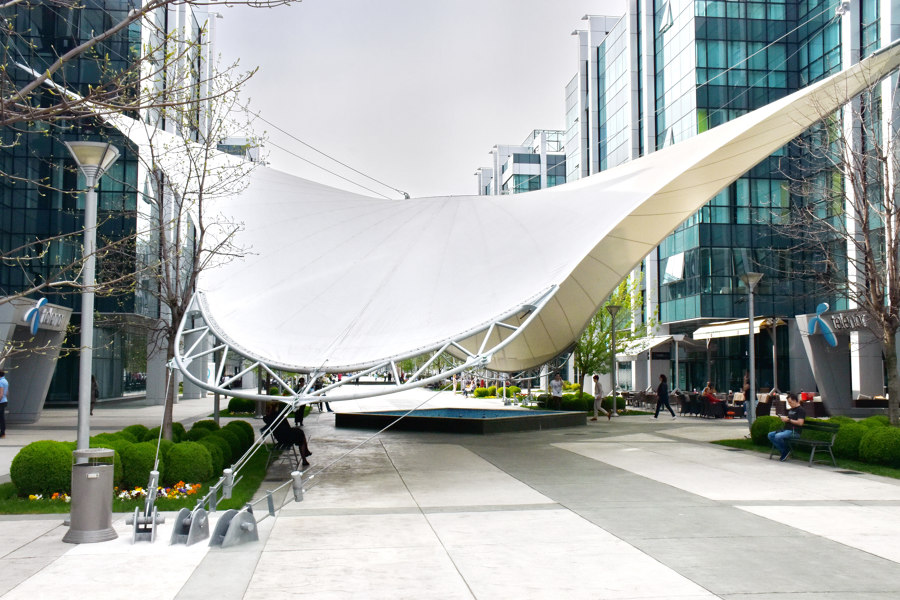
Increased whiteness that lasts: the “Atlas Architecture” innovation by Sattler PRO-TEX GmbH Photo: Sattler PRO-TEX GmbH
×Fascinating light, healthy acoustics
With “EttlinLux”, Ettlin Smart Materials demonstrates the design potential of textiles in the LED sector. The optical grid creates spacious structures without having to actually carve out the depth. Fields of application range from art projects and permanent light installations to residential and automotive lighting. Eschler Textil GmbH has dedicated itself to solving a frequent irritation of LED lights, namely the visibility of individual light points: an intelligent layered structure of smart textiles creates a homogeneous division of the LED dots over the entire surface and optimises the room acoustics almost incidentally for an atmospheric room experience.
Impressive depth: lighting installation with EttlinLux at Brussels Airport @ ACTLD.com (top); Make LED light points disappear: Eschler combines lighting ambience with room acoustics at its Techtextil trade fair stand Photo: Eschler (above)
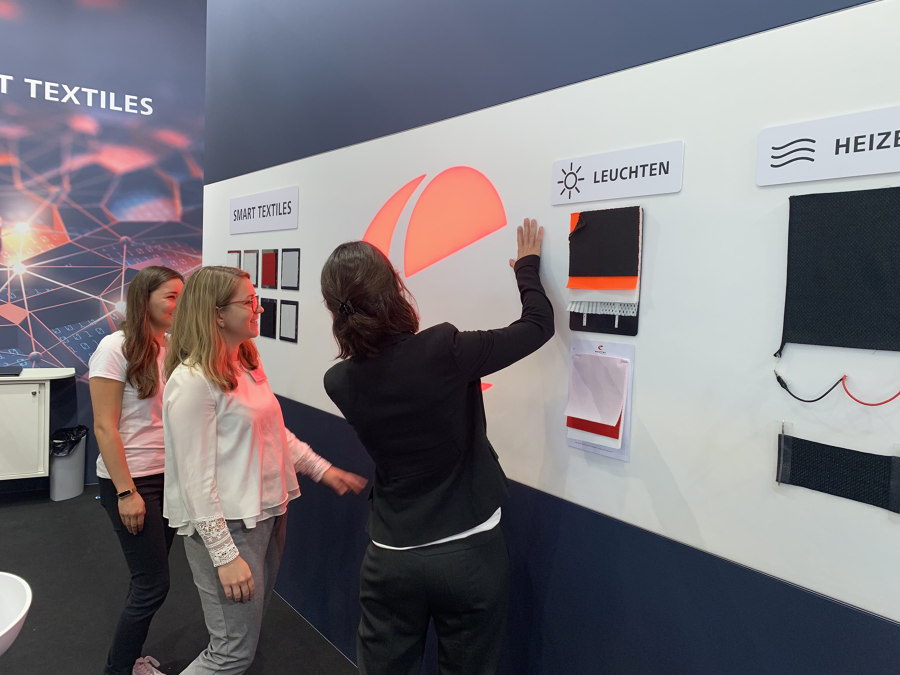
Impressive depth: lighting installation with EttlinLux at Brussels Airport @ ACTLD.com (top); Make LED light points disappear: Eschler combines lighting ambience with room acoustics at its Techtextil trade fair stand Photo: Eschler (above)
×The exhibitors at Techtextil also offered a lot of inspiration when it came to sound insulation. Once again, the focus was on sustainability and conservation of nature At the forefront, for example, was market leader BWF Feltec, whose design felts and acoustic panels are made of pure wool. In addition to highly flexible solutions for e.g. ceiling design, the manufacturer is also focusing its attention on areas such as cable ducts, which have previously received little attention, and which it is replacing with sound-absorbing solutions. Creativity with classic acoustic panels: Sandler AG is rethinking the classic panel and not just focusing on recyclable materials, but also giving interiors a natural touch by coating the panel with fresh alpine hay or cornflowers. – Kerstin Männer
Connects nature, function and design: Franz Endres, Managing Director BWF Feltec, showcases flexible acoustic solutions at Techtextil 2019 Photo: KMänner (top); Creative coatings on the acoustic panels from Sandler at Techtextil Photo: Sandler (above)
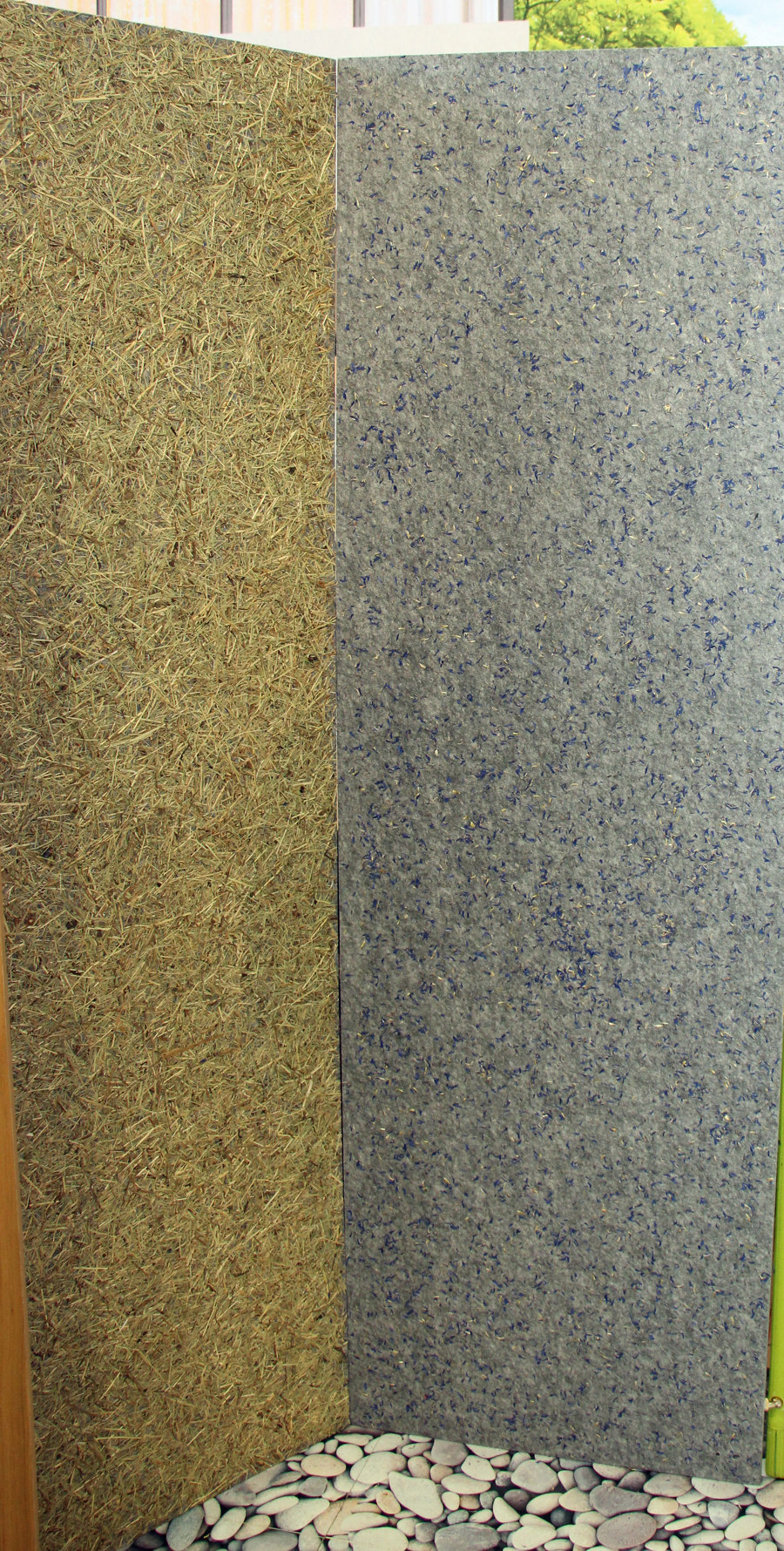
Connects nature, function and design: Franz Endres, Managing Director BWF Feltec, showcases flexible acoustic solutions at Techtextil 2019 Photo: KMänner (top); Creative coatings on the acoustic panels from Sandler at Techtextil Photo: Sandler (above)
×Techtextil is the internationally leading trade fair for technical textiles and nonwovens. Every two years, exhibitors from all over the world present the entire spectrum of applications for textile products and technologies.
Texprocess, the leading trade fair for the garment manufacturing and textile processing industry, will take place at the same time as Techtextil. In 2019, more than 1,800 exhibitors from 59 countries presented their new products at the two trade fairs in Frankfurt.







